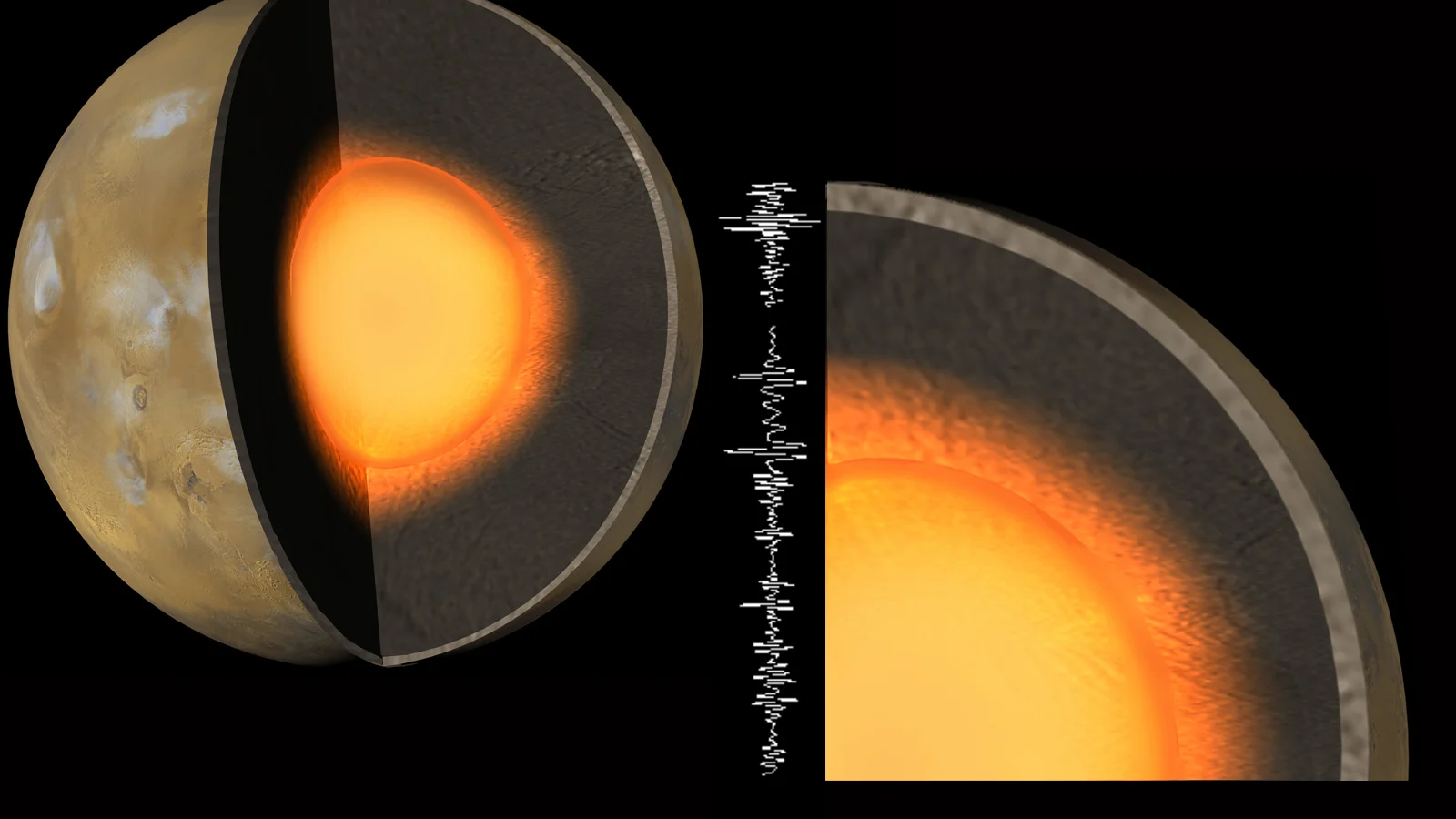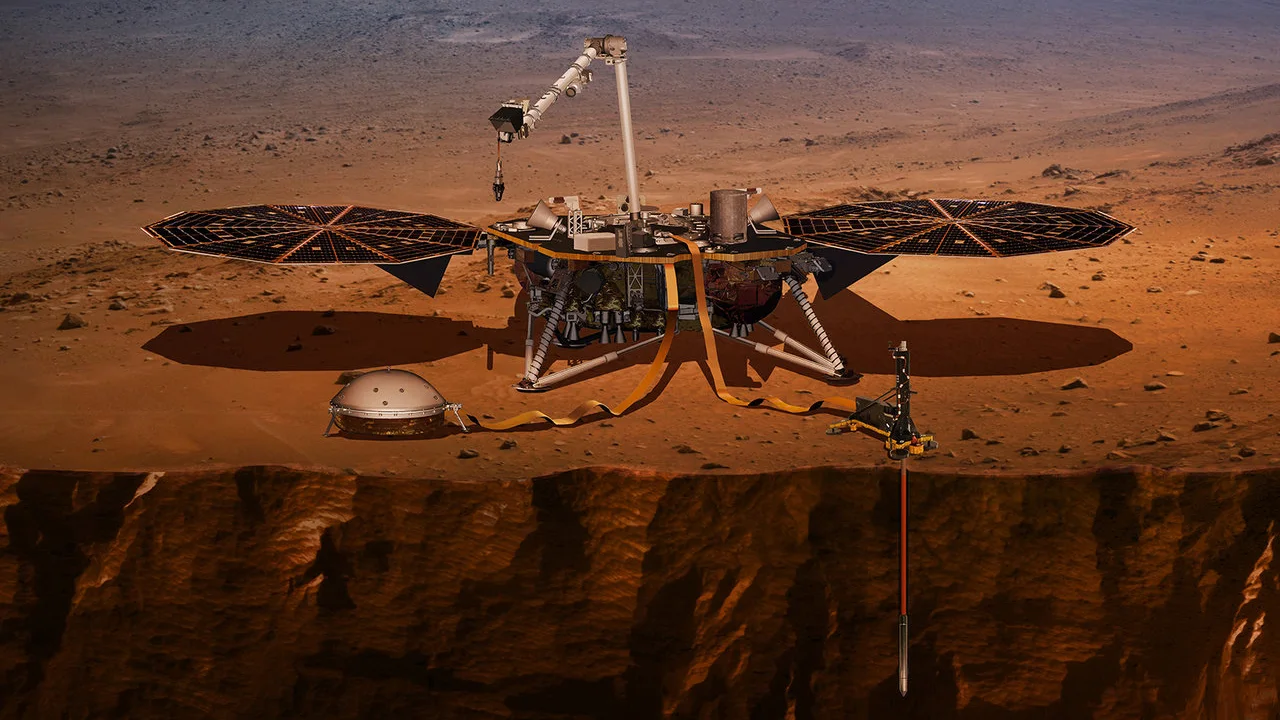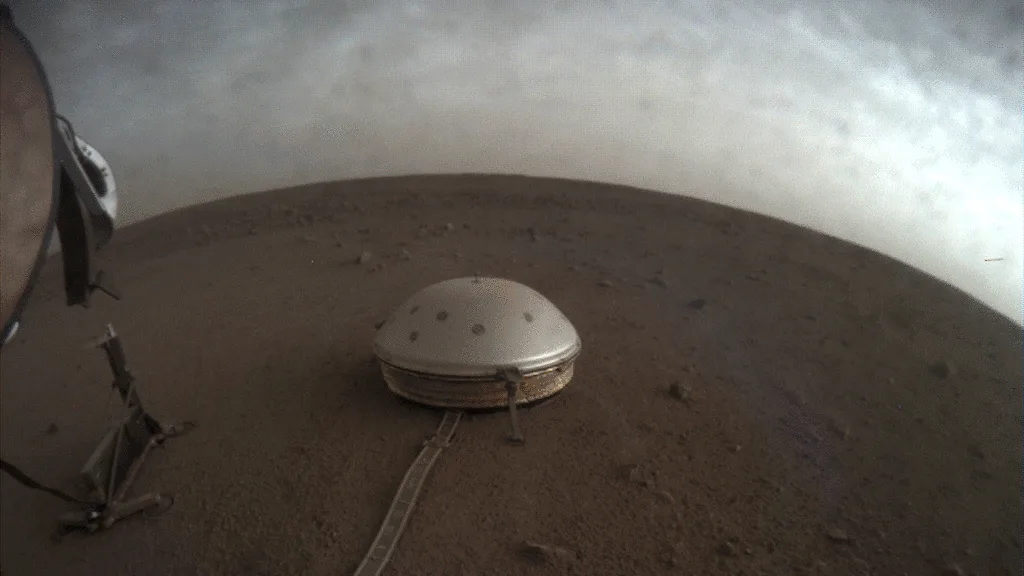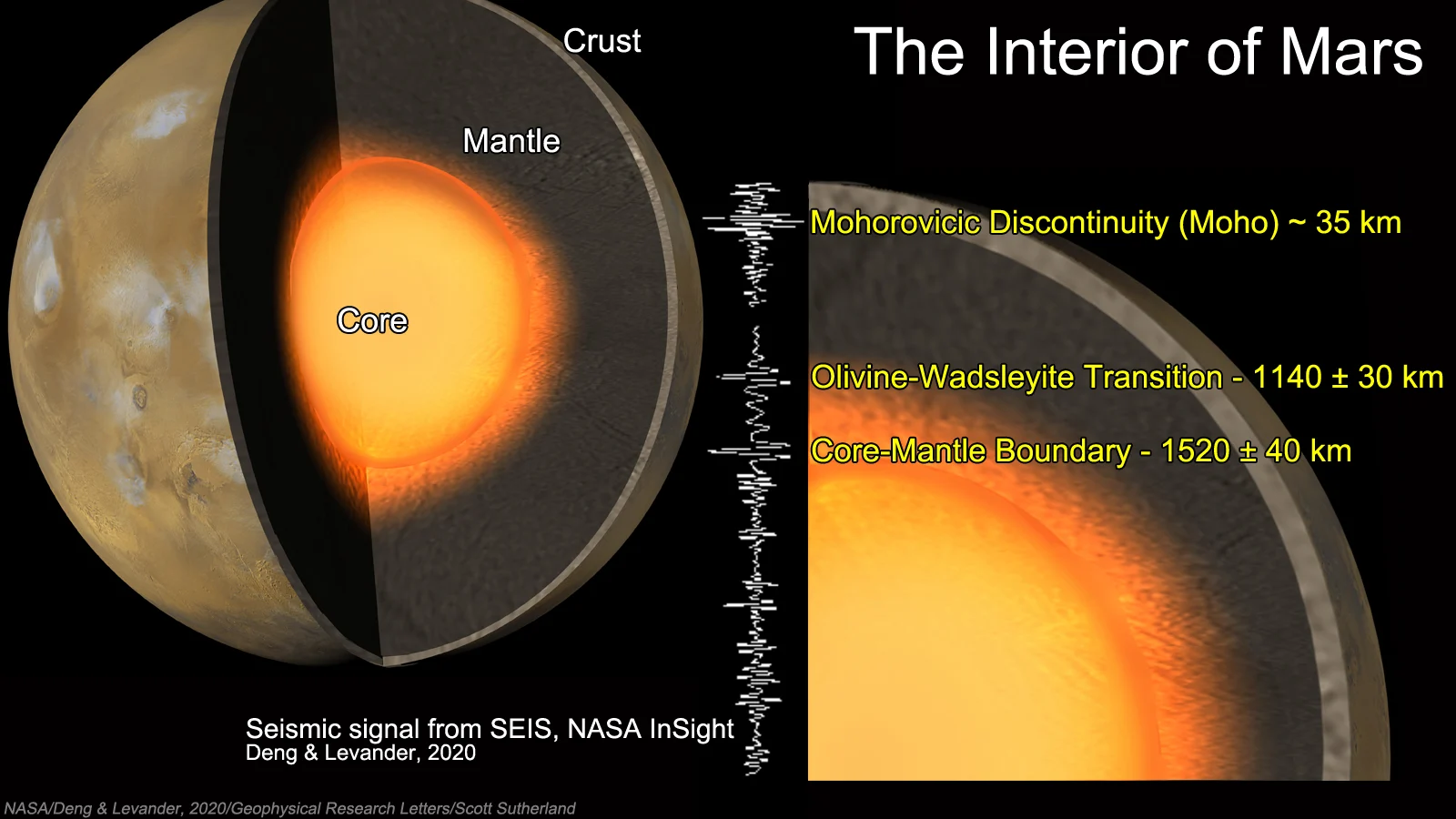
NASA InSight gives us the first real peek at Mars' interior structure
Marsquakes have traced the interior structure of the Red Planet
Decades of exploration have given us a detailed look at the surface of Mars. Still, the Red Planet's interior structure has always remained in the realm of speculation and estimates. Now, data sent back by a NASA lander has given us the first real look at what the planet's interior is like.
NASA's InSight lander touched down nearly two years ago, in November 2018. The primary mission of this remote-controlled robotic geologist - to sit quietly in Elysium Planitia, measuring tremors in the ground with the very first seismometer to be set directly onto the surface of Mars.

This artist's impression of Insight shows the lander sitting on the Mars surface, with its instruments deployed. The lander's seismometer is the dome-shaped instrument on the left. Credit: NASA/JPL-Caltech
Simply by sensing the timing of these 'marsquakes' as they arrive at the seismometer, researchers can use tried and true methods developed here on Earth to determine where the major boundaries are between the planet's crust, mantle and core.
During its first 8 months on the ground, InSight's Seismic Experiment for Interior Structure (SEIS) instrument recorded over 170 marsquakes and a continuous stream of noise due to all vibrations in the environment. Two researchers from Rice University - Ph.D. candidate Sizhuang Deng and Professor Alan Levander - have now used that 2019 data to give us a basic picture of what Mars looks like inside.

This view from InSight's Instrument Context Camera (ICC), located underneath the lander's deck, shows the Seismic Experiment for Interior Structure (SEIS) instrument safely tucked under its protective dome. Credit: NASA/JPL-Caltech
There are hundreds of earthquakes every day on Earth, and there are seismometers positioned all around the world. The different perspective provided as each detector picks up the same earthquakes allows researchers to pinpoint tremors and extract an abundance of information about the materials between the quake and the sensor. On Mars, it's not so simple. There are far fewer marsquakes, and we only have one detector (so far).
To get the most out of this one Martian seismometer, Deng and Levander used what's known as 'ambient noise autocorrelation'. This method looks at all of the continuous seismic data collected by InSight and matches up all of the signals - direct, reflected from underground, and those that travel completely around the planet - that can be traced back to a specific source.
For example, say a meteorite struck the ground 50 kilometres to the west of InSight. The vibrations from that impact would radiate outwards through the surface in all directions. They would also propagate down inside the planet. SEIS would sense the surface signals first. Sometime later, it would record any signals reflected back towards the surface from below (as those signals bounced off discontinuities in the rock structure). Likely even later than that, the instrument would pick up another signal from the east, as the impact vibrations travelled completely around the planet. Autocorrelation will pick out all of these signals as being from the same source. The timing between them can tell the researchers a lot about the planet.

The artist impression of Mars' interior (left) is compared to InSight SEIS autocorrelated data (center), to show where the boundaries exist below the surface (right). Three 'discontinuities' are noted in the seismic data, indicating the likely location of the planet's interior boundaries. Credit: NASA/Deng & Levander, 2020/GRL/Scott Sutherland
According to the study, the boundary between the crust and the mantle - the 'Martian Moho' - is located around 35 kilometres below InSight. 'Moho' is short for Mohorovicic Discontinuity. Named after the Croatian seismologist who discovered Earth's Moho over a century ago, this indicates where there's a change in density of the material beneath the surface. The lower-density crust is above the Moho, and the higher-density mantle is below it.
At roughly 1,140 kilometres down, InSight's seismic data revealed another discontinuity, which Deng and Levander say is most likely the "olivine-wadsleyite transition in the Martian mantle." Rather than indicating a change to another distinct layer of the interior, this is where there's a marked change in the mantle's mineral structure. Basically, the very high pressures and temperatures deeper down in the mantle force chemical and structural changes to the mineral olivine, changing into another mineral known as wadsleyite.
Since the conditions of this transition are well-known, the depth of the olivine-wadsleyite transition can tell us a lot about how much Mars has cooled.
"The temperature at the olivine-wadsleyite transition is an important key to building thermal models of Mars," Deng said in the Rice press release last week. "From the depth of the transition, we can easily calculate the pressure, and with that, we can derive the temperature."
Finally, at around 1,520 kilometres down, there is a third discontinuity, where Deng and Levander put the transition between the mantle and Mars' iron core.
Watch below: Bizarre martian topsoil has THE MOLE on NASA InSight stuck again
According to the study, these measurements line up reasonably well with estimates from other methods, such as gravity measurements of crust thickness from orbit.
"In the absence of plate tectonics on Mars, its early history is mostly preserved compared with Earth," Deng told Rice News. "The depth estimates of Martian seismic boundaries can provide indications to better understand its past as well as the formation and evolution of terrestrial planets in general."
"Ultimately, it may help us understand planetary formation," Levander added.
Sources: Rice University | Geophysical Research Letters | Geology.com











